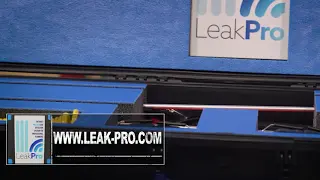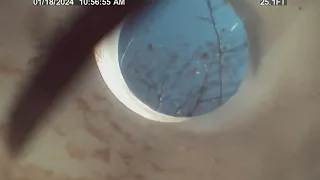In a single day, a plumber can encounter everything from poorly installed fixtures in million-dollar homes to geysers of pressurized water soaking entire rooms. This blog stands alone, explaining each disaster scenario in detail while offering a professional perspective on what went wrong and what could have prevented it. Whether you’re a DIY enthusiast or a seasoned tradesperson, these stories will make you shake your head, laugh, or cringe—all in the name of better plumbing awareness.
Why Plumbing Disasters Happen So Often
Modern plumbing, when done properly, is incredibly reliable. Yet disasters still occur for a few common reasons:
- Inexperienced or untrained workers performing questionable installations
- Ignoring local plumbing codes and best practices
- Overconfidence in handling high-pressure lines
- Using improper materials or tools
- Simple neglect, such as forgetting to shut off the main valve before disassembling a fixture
When plumbers see these issues, they realize that most failures come down to skipping steps or missing vital safety checks. Even something as simple as forgetting to turn off water can lead to major property damage. Watching real-world examples helps you learn what not to do, saving you or your clients from costly repairs and possible lawsuits.
1) The $1.3 Million House Gone Wrong
One video clip shows the plumbing under a sink in a house said to be worth around $1.3 million. At that price point, you’d expect everything to be perfect—nice finishes, code-compliant configurations, and a well-organized layout. Instead, we see:
- Accordion-style flexible piping above the P-trap (which is prohibited in many places because it traps debris and fosters bacteria buildup)
- A weirdly shaped S-trap that can siphon the water out of the trap, letting sewer gases back into the home
- Large unsealed holes in the cabinet wall, presumably to feed supply lines or drains, making the whole setup look unprofessional and potentially letting pests or cold drafts in
The surprising part is that such a high-end home would have a subpar job done on something as basic as a sink drain. Properly installed drains require no “accordion” pipes. Instead, they should have a smooth-walled tailpiece, a correctly vented trap, and sealed pipe entries. Even something like forgetting to align the trap arm at the right slope can result in bad odors and poor drainage. Even if nobody notices at first, these small mistakes often balloon into bigger problems, from hidden mold growth to repeated backups.
2) Fake Plumbers and the Backward Plunger Trick
Another clip spotlights two individuals using a plunger on what appears to be a main cleanout access. They jam the plunger in, hoping to clear a city or building sewer. Rather than employing a professional snake, hydro jet, or even a blow bag, these folks stand around pumping away with a domestic sink plunger. The cringe factor is high for anyone who knows standard drain-cleaning procedures.
Plungers are typically used in sinks, toilets, or tubs where you can create an airtight seal. At a main cleanout, you can’t build enough back-pressure to push a clog out to the city main. In fact, if you suspect the city line is blocked, you’d want a professional with the right rodding equipment. This unorthodox approach can also be dangerous if there’s a sudden surge. Even if they free the clog, the next wave of sewage could knock them off their feet or expose them to hazardous waste.
3) Exploding 200 PSI Sprinkler Line
High-pressure lines, like those in fire sprinkler systems, demand respect. In one example, someone tries to remove a plug or fitting on a pressurized system believed to be carrying around 200 PSI. Instead of shutting the line off or gradually releasing the pressure, they twist the fitting, letting out a small trickle that quickly becomes a full-blown geyser.
Pressurized lines can be lethal if not handled correctly. Imagine a 200 PSI burst hitting you in the face, plus the risk of falling off a ladder as you scramble away from the torrent. The correct procedure would involve shutting the isolation valve, bleeding the pressure, and opening the line carefully. Fire sprinkler systems are also under strict code guidelines because they’re lifesaving devices—so tampering with them can invite both property damage and significant liability.
4) The Giant Wave from a Main Blowout
In another scene, water surges out of a large pipe on a construction site or near a water main break. The wave is powerful enough to look like a mini-tsunami, carrying debris and endangering workers who might be near the flow. Such incidents occur when large-diameter lines fail due to pressure spikes, corroded sections, or improper installation. The massive volume and speed can dislodge soil, undermine foundations, or flood entire streets.
These events underscore why municipalities emphasize strict standards and regular inspections of water mains. They also show how quickly a small leak can escalate if the system is old or carrying abnormally high pressures. For a plumber, containing this kind of situation is nearly impossible without heavy machinery or an external shutoff station.
5) Flooded Bathroom Sink: Cleaning While Flooding
One clip captures water gushing from a bathroom sink supply or drain line, while someone tries to vacuum up the flow with a wet/dry vac. It’s a comical yet sad scenario, as each time water blasts out, the vacuum’s effort is pointless. The real solution is to turn off the water at the angle stop or the main supply. Mopping or vacuuming while the line is still pressurized is akin to bailing water from a sinking boat without patching the hull. A better approach is:
- Immediately shut the water supply
- Drain residual water by opening faucets
- Evaluate the broken or loose connection
- Repair or replace as needed
In high-end bathrooms, you might see expensive finishes or delicate cabinets that are easily ruined by water. The cost of ignoring a simple step like shutting off the valve can run into thousands of dollars in repair bills.
6) Almost Losing a Tool in the Toilet
Finally, there’s the quick clip of someone dropping a tool into a toilet drain. Tools often slip from sweaty hands or tool belts during repairs, especially if the plumber leans over the fixture at a bad angle. While a small tool might pass if it’s short and the line is big, more often it lodges in the trap or further down, requiring a partial disassembly or a professional retrieval.
Beyond lost tools, foreign objects in toilets can cause chronic partial clogs. Even if you manage to nudge the object along with water pressure, it might get stuck at a narrower bend, leading to repeated backups. The biggest takeaway is always to keep your tools in a secure belt or on a stable surface, or better yet, remove the toilet if it’s a complicated job requiring heavy manipulation.
What These Disasters Teach Us
-
Always Turn Off Water or Relieve Pressure
Whether you’re unscrewing a valve on a sprinkler line or replacing a faucet supply, shutting off the main or local valve first is critical. This step alone prevents most water-related chaos. -
Inspect and Follow Codes
Code requirements for trap styles, vents, or pipe materials are there to stop exactly these kinds of fiascos. An S-trap or accordion tailpiece might seem like a quick fix but can violate code, cause odors, or lead to repeated clogs. -
Take Your Time With High-Pressure Lines
Anything above normal household pressure can be hazardous. For fire sprinklers or large commercial systems, the safest route is to call a licensed professional who knows how to bleed the system carefully. -
Use Proper Drain-Clearing Methods
Plungers do have their place, but not at a main cleanout or on a city line. If the clog is severe, mechanical augers or hydro jets are the correct approach. -
Secure Your Tools
Tools dropping into a toilet or a drain line can ruin your day. Keep your workspace organized and your tool belt on. This is especially crucial when working over an open fixture or pipe. -
Know Your Limits
Some of these disasters happened because individuals tried short-cuts or lacked the know-how. A professional plumber or an experienced pro from a licensed company should handle complex tasks, especially with high risk of flooding or property damage.
The Entertainment Factor
While it’s unfortunate for the homeowners or unsuspecting bystanders in these videos, for viewers they can be comedic gold. People love seeing others scramble around in knee-deep water or attempt outlandish fixes. However, it’s important to remember the human side—damaged homes, destroyed valuables, or even physical injuries. A short viral clip only captures the immediate drama, not the long aftermath.
From incompetent quick fixes to ignoring the fundamental step of turning off water, each scenario warns us about what goes wrong if you skip the basics. For homeowners, the best takeaway is to invest time in understanding your system, or if the job seems too big, call in a certified plumber. For tradespeople, these videos reaffirm the importance of code compliance, thorough checks, and methodical repairs. Nobody wants to become the next cringe-worthy clip on social media, wading through a mini-tsunami of their own making.




